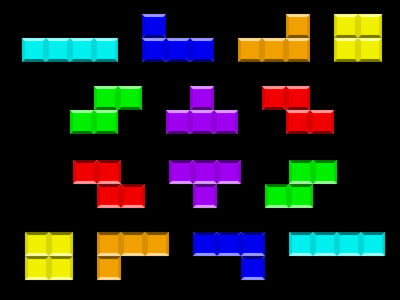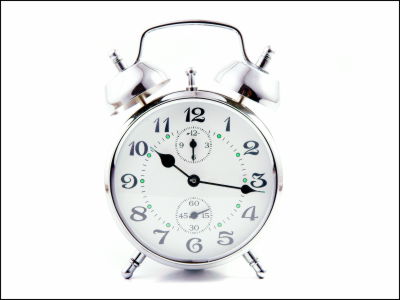Studies show that the 'restart' time of the brain varies from region to region when waking up from general anesthesia

General anesthesia during surgery can lead to memory loss when the anesthesia is cut off. After all, a paper was published by anesthesiologists on how the brain 'restarts' after the anesthesia is cut off.
Recovery of consciousness and cognition after general anesthesia in humans | eLife

A research team led by George A. Mashur, an anesthesiologist at the University of Michigan, gave general anesthesia to 30 of the 60 healthy adults who gathered as participants in the experiment, immediately after awakening 3 hours later, and thereafter. A cognitive test was conducted every 30 minutes for reaction speed and memory. The remaining 30 people take the same cognitive test without anesthesia and use it to correct the results.
The following 6 types of cognitive tests were conducted.
-Motor Praxis Task (MP) : A test that clicks on randomly displayed squares on the screen. The squares get smaller and smaller and harder to track. It depends on the function of the visual cortex and the sensorimotor cortex.
-Psychomotor Vigilance Test (PVT) : Measures the response to a visual stimulus randomly displayed on the screen for 3 minutes. The right frontal parietal cortex is active when the performance of continuous attention is improved, such as after taking sufficient rest time, but the function
-Digit-Symbol Substitution Task (DSST) : Corresponds to numbers that are displayed continuously. Mainly active in the temporal lobe, frontal lobe, and motor cortex.
-Fractal 2-Back (F2B) : A test that returns a response when a continuously presented Mandelbrot set is the same as the one presented two times before. The dorsolateral prefrontal cortex, cingulate cortex, and hippocampus are activated.
-Visual Object Learning Test (VOLT) : First, memorize 10 figures displayed in succession. After that, 20 figures with 10 similar figures added to the same 10 are displayed, so select the 10 memorized figures. Depends on the frontal lobe, bilateral anterior medial temporal lobe, and hippocampus.
-Abstract Matching (AM) : Two sets of figures that change color and shape are shown in the lower left and lower right of the screen, and the newly displayed figure at the top of the screen is either set on the lower side based on the rules. It will be classified into. A test that assesses abstraction and cognitive flexibility and relies on the prefrontal cortex.
As a result of the experiment, it was confirmed that the accuracy and speed of all 6 types of cognitive tests decreased after anesthesia compared to before anesthesia.
The following is a diagram showing the 'accuracy' of the test results. The purple color shows the results of the anesthetized participants, and the black color shows the results of the non-anesthesia participants. From left to right, the results are lined up every 30 minutes after awakening from anesthesia. Mostly, the baseline was where the results of the participants who were not anesthetized were, and the more they went down, the more incorrect answers they had.

The following shows the 'speed' of the test result in the same way as the above figure.

From these results, it was found that the first 'reboot' is the prefrontal cortex, which controls abstract problem solving, and the area responsible for immediate reaction and attention takes time to recover.
'I was surprised at first, but from an evolutionary point of view, it makes sense that high cognitive abilities need to be restored early. Some threat,' said Max Keltz of the University of Michigan School of Medicine, who participated in the study. When I wake up, areas such as the prefrontal cortex are important for classifying situations and developing action plans. '
In addition, after 3 hours, the brain recovered to the same level as the group without anesthesia, and after a few days, the effect on sleep time disappeared. 'The healthy human brain has the ability to recover from prolonged exposure to deep anesthesia,' said Michael Avidan of the University of Pennsylvania School of Medicine. Clinically, during recovery from anesthesia or surgery. It means that some of the cognitive deficits seen, such as 'Senmo,' may be due to factors other than the effects of anesthetics. '
Related Posts:
in Science, Posted by logc_nt







